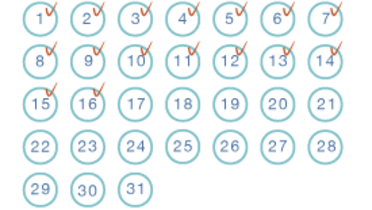-
0
Patient Assessment
- 0.1 Patient demand
- 0.2 Overarching considerations
- 0.3 Local history
- 0.4 Anatomical location
- 0.5 General patient history
-
0.6
Risk assessment & special high risk categories
- 5.1 Risk assessment & special high risk categories
- 5.2 age
- 5.3 Compliance
- 5.4 Smoking
- 5.5 Drug abuse
- 5.6 Recreational drugs and alcohol abuse
- 5.7 Parafunctions
- 5.8 Diabetes
- 5.9 Osteoporosis
- 5.10 Coagulation disorders and anticoagulant therapy
- 5.11 Steroids
- 5.12 Bisphosphonates
- 5.13 BRONJ / ARONJ
- 5.14 Radiotherapy
- 5.15 Risk factors
-
1
Diagnostics
-
1.1
Clinical Assessment
- 0.1 Lip line
- 0.2 Mouth opening
- 0.3 Vertical dimension
- 0.4 Maxillo-mandibular relationship
- 0.5 TMD
- 0.6 Existing prosthesis
- 0.7 Muco-gingival junction
- 0.8 Hyposalivation and Xerostomia
- 1.2 Clinical findings
-
1.3
Clinical diagnostic assessments
- 2.1 Microbiology
- 2.2 Salivary output
-
1.4
Diagnostic imaging
- 3.1 Imaging overview
- 3.2 Intraoral radiographs
- 3.3 Panoramic
- 3.4 CBCT
- 3.5 CT
- 1.5 Diagnostic prosthodontic guides
-
1.1
Clinical Assessment
-
2
Treatment Options
- 2.1 Mucosally-supported
-
2.2
Implant-retained/supported, general
- 1.1 Prosthodontic options overview
- 1.2 Number of implants maxilla and mandible
- 1.3 Time to function
- 1.4 Submerged or non-submerged
- 1.5 Soft tissue management
- 1.6 Hard tissue management, mandible
- 1.7 Hard tissue management, maxilla
- 1.8 Need for grafting
- 1.9 Healed vs fresh extraction socket
- 1.10 Digital treatment planning protocols
- 2.3 Implant prosthetics - removable
-
2.4
Implant prosthetics - fixed
- 2.5 Comprehensive treatment concepts
-
3
Treatment Procedures
-
3.1
Surgical
-
3.2
Removable prosthetics
-
3.3
Fixed prosthetics
-
3.1
Surgical
- 4 Aftercare
Local history
Key points
- Inspect facial structures for asymmetries, congenital anomalies, angiomata
- Evaluate oral condition, especially history of existing periodontitis and/or temporo-mandibular dysfunction (TMD)
- Treatment and control of existing periodontitis and TMD is critical
- Non-implant based therapies may be indicated due to certain oro-maxillary conditions
Fundamentals of anamnesis for the oro-maxillary area
The key questions in a complete anamnesis are related to: mouth opening, salivary output, presence of mucosal diseases, gingival health, signs of previous periodontal surgeries, tooth hypermobility, TMJ problems, orthodontic treatment, bad taste, bad breath/halitosis, tongue coating and oral hygiene.
Periodontal and gingival conditions, oral hygiene
Gingivitis is not necessarily a compromising factor for implant treatment, however plaque accumulation and lack of oral hygiene can become critical factors for long-term maintenance of mucosal and peri-implant tissue levels and it also reveals the history of the patient’s hygiene attitude.
If existing periodontitis cannot be successfully treated and controlled with surgical and/or conservative treatment and adequate oro-pharyngeal hygiene, consider non-implant based therapeutic options.
An assessment of the patient’s oral hygiene motivation and possibilities should be undertaken. In case of insufficient motivation or missing hygiene options e.g. in frail patients or patients with reduced eyesight or reduced physical possibilities to perform adequate oral hygiene, consider non-implant based restoration options.
Previous surgery or trauma
Evaluation of previous surgeries in the maxillo-facial area and their potential impact on mouth opening, bone quality and quantity, preservation of anatomical landmarks, condition of soft tissue, inserting ligaments, sinuses, mandibular nerves etc, should be completed. Special consideration is warranted regarding bone defects and bone height discrepancies after surgery and trauma. If needed, consider additional diagnostic support such as by panoramic X-rays, CBCT.

TMD
During an anamnesis, the clinician should evaluate the TMJ condition and identify previous or existing TMJ disorders or malfunctions (TMD). This may necessitate a review of the history or signs of arthritis, injuries, malocclusion, clicking, limited/reduced mouth opening, pain, so-called migraine and other signs of parafunctions. If needed, the clinician may consider additional diagnostic support e.g. by panoramic X-rays, CT or MRI to visualize the soft tissue condition (disc). In situations of traumatic occlusion, identification and correction of restorations and occlusal-functional design may be necessary. To relieve the muscular system/spasm and joint pain and to address TMDs that are refractory or resistant to therapy, referral to a specialist in management of TMD can be made. Untreated or untreatable TMD is a contraindication to implant-based therapy.



